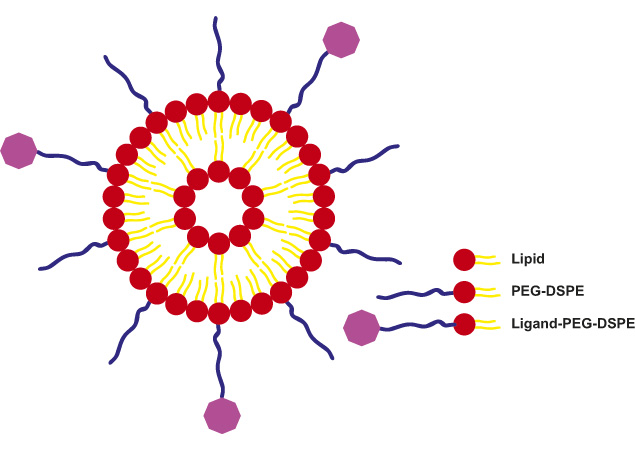Welcome to Iris Biotech
For better service please confirm your country and language we detected.

For better service please confirm your country and language we detected.

Thank you very much for your interest in our products. All prices listed on our website are ex-works, Germany, and may attract customs duties when imported.
You may/will be contacted by the shipping company for additional documentation that may be required by the US Customs for clearance.
We offer you the convenience of buying through a local partner, Peptide Solutions LLC who can import the shipment as well as prepay the customs duties and brokerage on your behalf and provide the convenience of a domestic sale.
Continue to Iris Biotech GmbHSend request to US distributorPublished on 17/06/2014
 Liposomes made of conventional phospholipides have low bioavailability and blood-circulation time. Their performance can be improved significantly by the use of dPEG-Phospholipids (Poly(ethylene glycol)–distearoylphosphatidylethanolamine; PEG-DSPE). Those novel liposomes have clearly prolonged circulation time as administration carriers for drugs, delivering active molecules to the desired target1,2. Due to PEG-DPSE’s amphiphilic characteristics and excellent biopcampatibility, it can as well be applied for polymeric nanoparticles, microemulsions, lipid polymer hybrid nanoparticles and solid lipid nanoparticles3.
Liposomes made of conventional phospholipides have low bioavailability and blood-circulation time. Their performance can be improved significantly by the use of dPEG-Phospholipids (Poly(ethylene glycol)–distearoylphosphatidylethanolamine; PEG-DSPE). Those novel liposomes have clearly prolonged circulation time as administration carriers for drugs, delivering active molecules to the desired target1,2. Due to PEG-DPSE’s amphiphilic characteristics and excellent biopcampatibility, it can as well be applied for polymeric nanoparticles, microemulsions, lipid polymer hybrid nanoparticles and solid lipid nanoparticles3.
Cellular uptake of PEG-DSPE liposomes can be improved significantly by using the right design elements such as the appropriate PEG-linker length in coordination with the appropriate liposomal PEG coating and optimal ligand density4-6. Therefore we provide dPEG-Phospholipids with three different defined PEG lengths and additionally derivatives with MAL- or TFP-function for optimal drug loading.